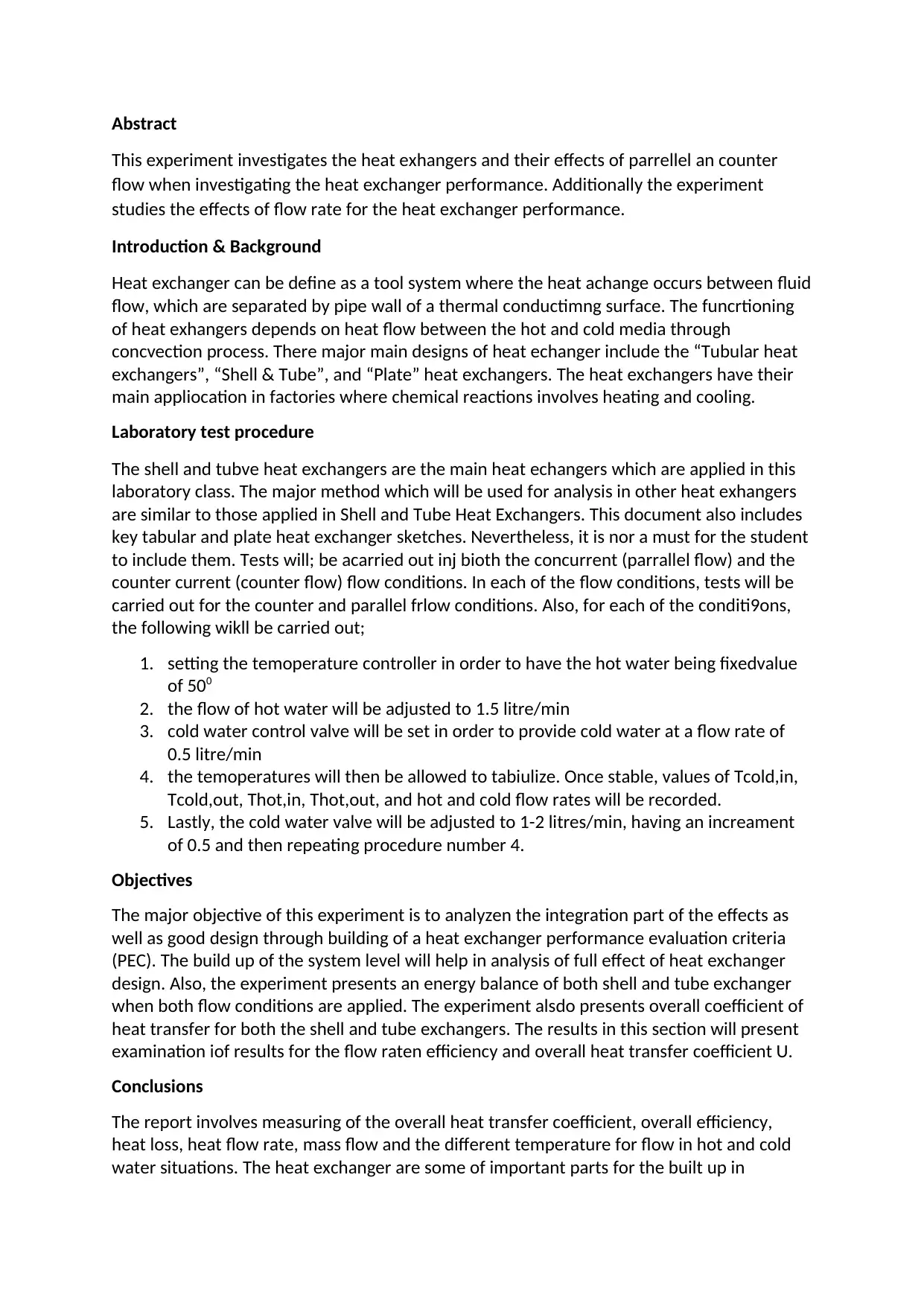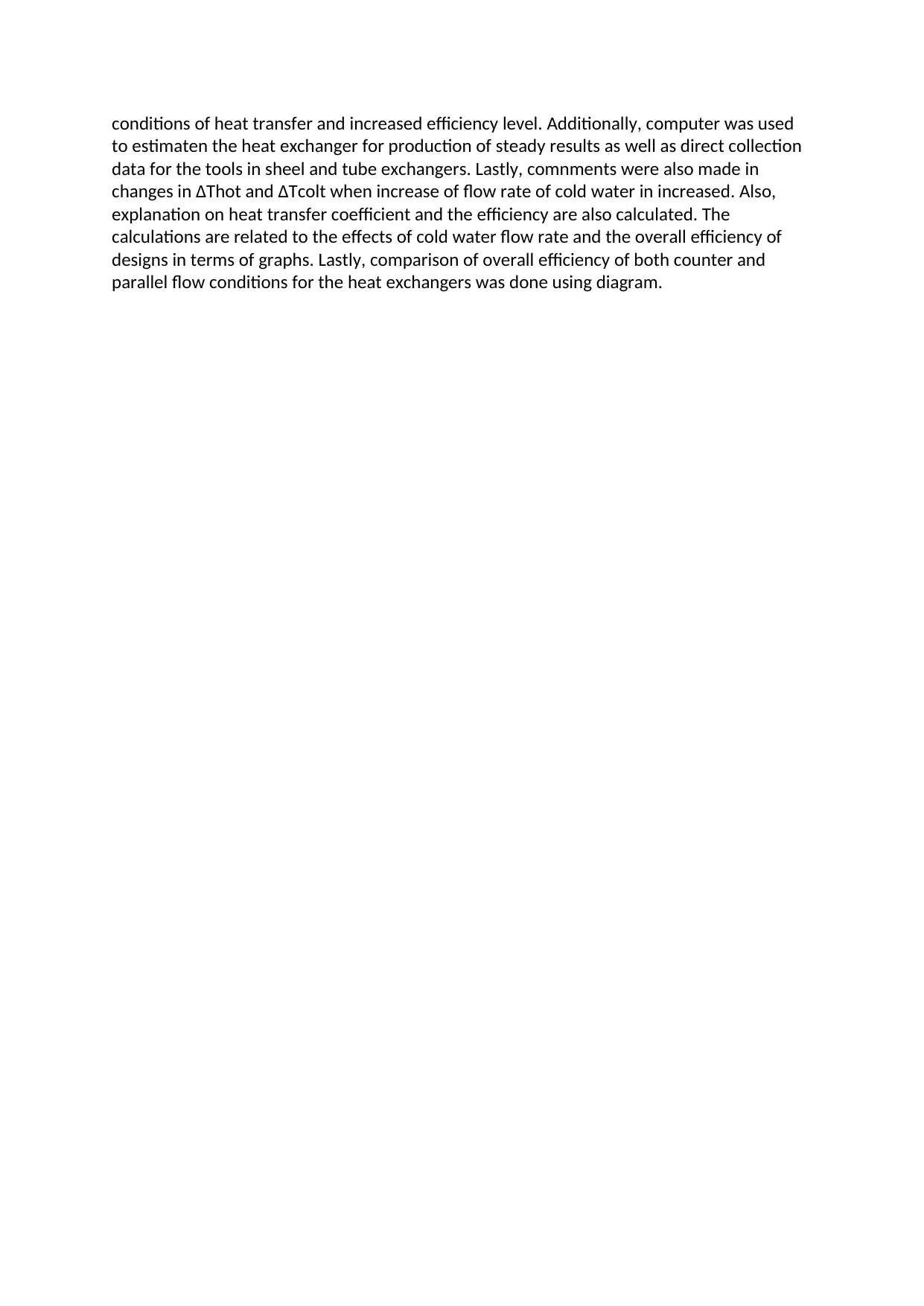Heat Exchanger Performance Evaluation: Flow Rate and Configuration
VerifiedAdded on 2023/06/12
|2
|668
|380
Practical Assignment
AI Summary
This report details an experiment investigating heat exchangers, focusing on the effects of parallel and counter flow configurations and the impact of varying flow rates on performance. The experiment uses a shell and tube heat exchanger to analyze heat transfer, measuring parameters such as overall heat transfer coefficient, efficiency, heat loss, and temperature changes in both hot and cold water flows. Computer-based estimations aided in data collection and analysis. The study compares the efficiency of counter and parallel flow conditions, examining the relationship between cold water flow rate, temperature differentials (ΔThot and ΔTcold), and overall design efficiency, with the aim of developing a performance evaluation criteria for heat exchangers.
1 out of 2







![[object Object]](/_next/static/media/star-bottom.7253800d.svg)